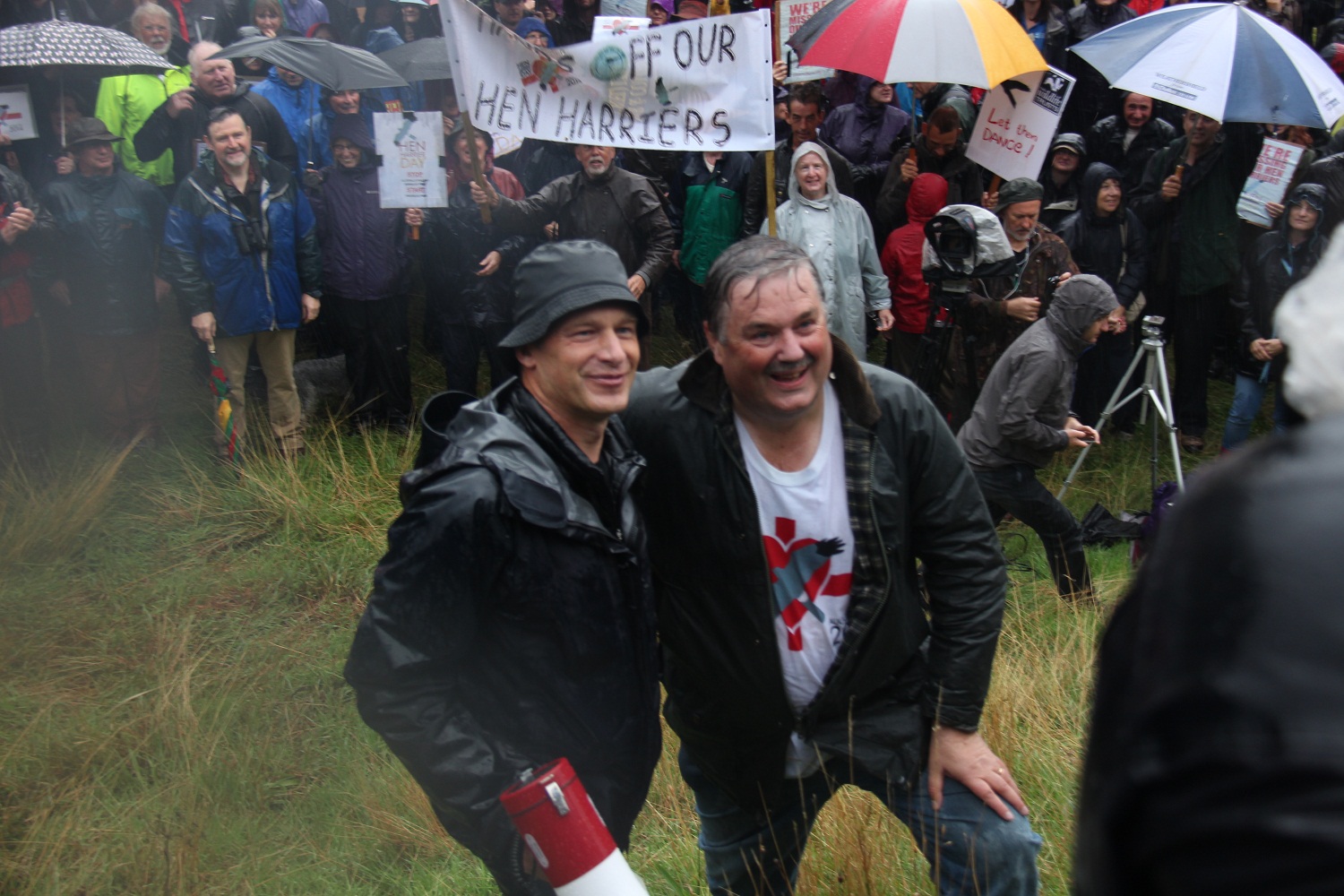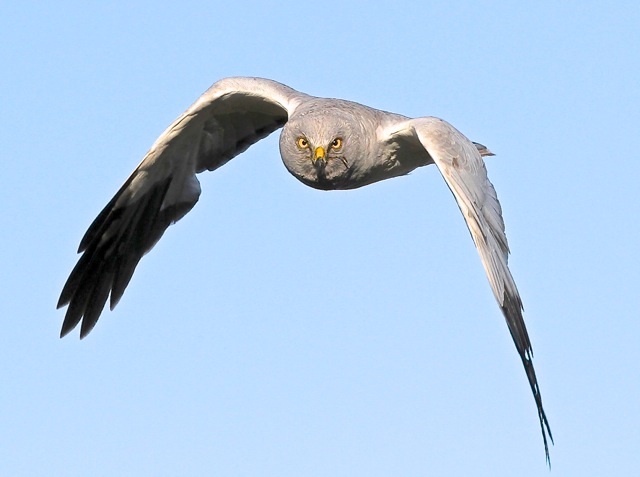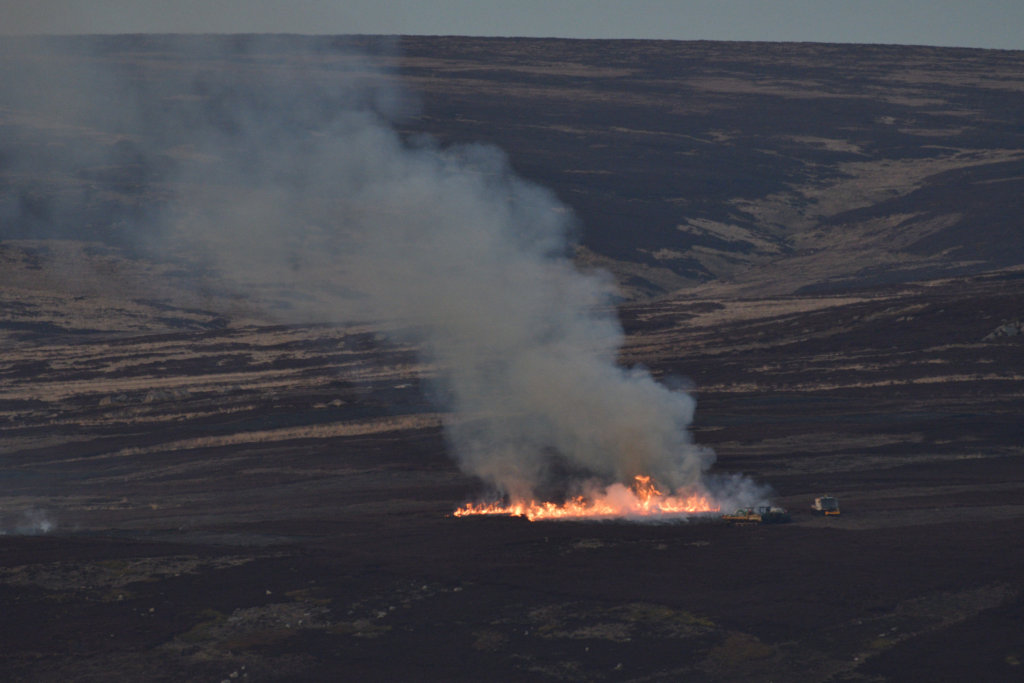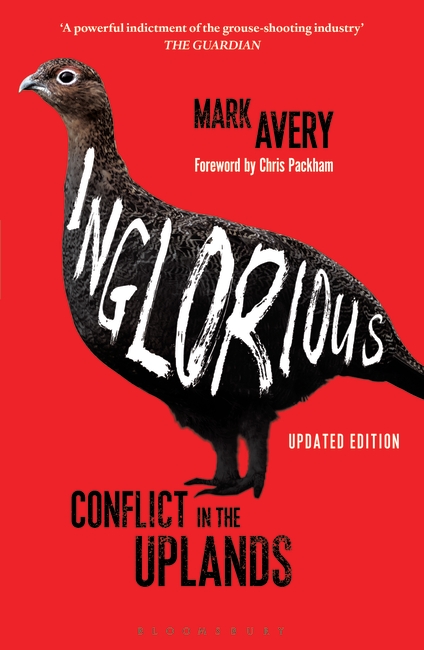Tomorrow is the Inglorious 12th – the start of the Red Grouse shooting season.

Since the first Hen Harrier Day events on 10 August 2014 in Derbyshire, Northumberland, Dorset and Northern Ireland we have come a long way, together. Driven grouse shooting is on its knees and cannot survive long. That’s partly because of the build up of disease and the impacts of climate change but it’s also because of the campaigning that has gone on for a mere eight years – just a twinkling of an eye in real terms.
How far have we come in those years?
First, there are more Hen Harriers now than there were then – certainly in England and we would have to wait for better data to know elsewhere. There aren’t loads and loads more, and there are far fewer than there should be, but there are more. We should celebrate that, in a restrained way because the true celebrations will come when there are many, many more.
You can forget the stories that this is due to brood-meddling – the ill-conceived stunt dreamt up by the shooting industry and swallowed by Rory Stewart when he was briefly a Defra minister. Isn’t it odd that the favoured locations for a spasm of Hen Harrier nesting seem to move around the country every year – it’s almost as if people were drawing lots to see who had to take one for the team each year. And isn’t it odd that you need two nests to trigger the calumny that is brood meddling but you so rarely get both nests being successful – funny that!
No, the increase in Hen Harrier numbers is much more to do with the establishment of a successful and safe nesting group in Northumberland which have survived because of old-fashioned round-the-clock guarding and surveillance. Well done to all involved!
I hear some good news from the Peak District, Cumbria and Bowland but I always wait for the collected results before any comment. Let’s hope it’s a good year – with successful nests spread across the country. What odds for a successful nest on the North York Moors, I wonder?

Second, we understand more about the risk of death for Hen Harriers. We all knew that Hen Harriers were persecuted – we knew about nest failures, and a bit about males (who provision nests with chicks) mysteriously disappearing from active nests, but the analysis of the Natural England data which was published on 19 March 2019 was a big step forward (see here for an explanation of its findings). That paper showed that Hen Harriers of pre-breeding age were most likely to ‘die’ (including disappear off the radar with no explanation which can be taken to be death) if they spent lots of time on grouse moors, if they had spent recent time on grouse moors and that their overall risk of death was ten times (TEN TIMES!!) higher per unit time on grouse moors than other habitats.
That paper also showed that the death-risk varied from National Park to National Park – until things change it is unlikely we’ll see gangs of Hen Harrier breeding in the North York Moors.
It took a long time for those results to emerge, and Ruth Tingay and I spent a lot of time prodding and nagging and cajoling Natural England to come clean with the data and get them properly analysed – but it was worth it. I wonder whether those results would ever have emerged without so much advocacy by us. But the paper was stunning and completely new analysis of a different aspect of Hen Harrier persecution than could come from more familiar observations. I can’t help but point out that this was predicted in a certain book about grouse shooting (page 253 – bottom of the page).

Third, burning of grouse moors is now going to be, or is, regulated in England and Scotland. Rather remarkably, although the SNP Scottish administration has talked a good talk about this for many years it is a Tory Defra which has introduced measures that exist now. That is quite amazing. The RSPB deserves a lot of credit for this, though they also deserve a slap on the wrists for being so feeble in other ways, but it was their action on burning and other events on Walshaw Moor, a complaint to the European Commission (back in October 2012) which helped to secure a partial ban on blanket bog burning from 2021 onwards (in England).
The EMBER study results in 2014 (see here, but there are more papers that followed that report) showed that burning increases peat degradation, run-off and particulate pollution of water bodies. The Climate Change Committee called for a ban of burning of peatland vegetation before the start of the 2021 season;

That hasn’t happened yet – but it might well happen over the next few years – grouse moor owners are expecting it.

Fourth, a different type of climate has changed, the media climate. We, a whole gang of people, including probably many that I do not know, have changed the way that the public think about intensive grouse shooting. All the news about dead raptors (brilliantly driven by Ruth Tingay through Raptor Persecution UK), all the news of flooding, all the news of damage to protected habitats, all the links to climate change have created a completely different atmosphere for this tawdry so-called sport. Passages in a book about Natural Capital by an Oxford academic economist, Prof Dieter Helm, must have been read by a lot of natural supporters of grouse shooting and must have made them wince (see here). My book, Inglorious, did a bit of the opinion changing too.
No longer do people in towns far from the grouse moors think that this is a quaint traditional hobby carried out by a few rich landowners, they now associate it with environmental problems. No longer is it so likely that rich city folk boast about going grouse shooting at the weekend because some of their workmates will know of the problems associated with this practice. No longer is owning a grouse moor a badge of being someone – it now carries the stigma of an unsustainable niche hobby which belongs to a bygone era. If there are any statues to grouse moor owners they might well be toppled, Colston-wise, in future.
No, driven grouse shooting is dying on its feet.
I can’t possibly thank everyone who has helped to get us this far – because I don’t know who they all are (and I’ll forget some of them anyway). But I am on safe ground in thanking Chris Packham and Ruth Tingay, a whole gang of raptor workers, and those who have attended or organised the many Hen Harrier Days and other events over the years. Of the organisations, the RSPB has done some good things but not done a lot of other good things, and the Wildlife Trusts have, with the notable exceptions of Sheffield and Derbyshire, been rather conspicuously absent from the scene. Wild Moors, led by Luke Steele, and the Revive coalition in Scotland have been great in more recent years.
We’re not there yet – and ‘there’ definitely means an end to driven grouse shooting, but we are getting there. Don’t despair – the progress over a short period of time is truly remarkable. Take some pride in what you have helped to achieve and know that the end is much closer than the beginning. Thank you.
[registration_form]
Thanks for that summary, Mark. I note your comments on Wildlife Trusts etc.
In my direct experience all over the Country, these organisations positively wince when the subject is raised. The worst offenders are local RSPB and SOC branch members, individually and collectively. At best, they may be closet followers of developments but would never admit it. It’s a bit like the C of E was before certain Archbishops started to take a direct pitch at social injustice.
I think traditionally the birdwatching community is made up of intelligent, gentle and benign ‘good’ people. Not people generally suited to conflict in thought, politics or in person. If just for one birding trip in four they drove past the reserves and ventured out into for (many of them) unchartered terrority onto CRoW land in any of the driven grouse citadels I think they would soon feel a sense of dismay and injustice at the state of things (absent raptors, monoculture short heather, new estate roads, saturation of stoat traps, medicated grit trays, pig-ignorant young keepers glowering, etc) and feel emboldened to do much more.
Tim Bonner is celebrating the glorious 12th too. Funny that there is not even a squeak of a mention of the central issue of raptor persecution – although to be fair he does hint at better times before WW1 when there was a more liberal view of protection from predation – as in killing absolutely everything that might ever eat a Grouse, and quite a few others just out of ignorance and prejudice.
Interesting interview with Alex Hogg this morning on Farming Today.
All the usual guff!
Good and interesting summary Mark. One thing I have noticed recently is that NE/DEFRA current satellite data cannot be used in comparison with that very important paper about mortality on grouse moors, Why? Well because when a satellite tagged harrier is on a moor NE tell the estate now to avoid embarrassing mortality ( persecution) Persecution may nave peaked and have declined slightly but is still going on, with strong suggestions that in Brood managed areas nests are being limited to two.
One of the great things in recent years thanks largely to a whole host of folk but especially Ruth is that persecution can no longer be swept under the carpet, it is newsworthy and now lots of folk (and it is increasing everyday) know about it. The criminals might avoid court still but they cannot avoid the opprobrium in the public domain. We all need to continue to be vigilant the tide is turning but we haven’t won yet.
Hi Mark,
A few days ago I noticed that one of the high end country Estate Agents was advertising a village called Trevalga, in Cornwall. a village where the tenants have been able to hand their tenancies down to their descendants (Unique, I believe). The tenants believe they will be put out of their homes.
For many years this village has been administered by a charity run by Marlborough College, which is now trying to offload it, with ‘Opportunities for sporting and recreational pursuits’ (including an opportunity for a shoot.)
I wonder if it might be worth your while investigating further.